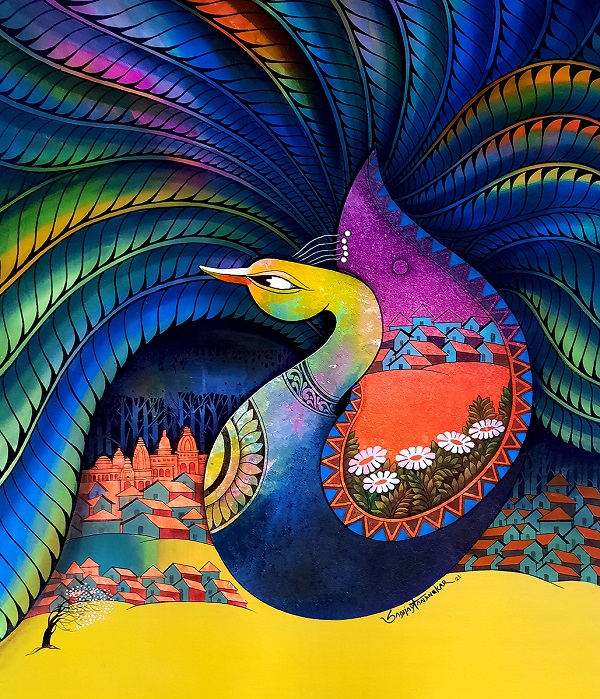Ever since the very beginning of humanity, traditional painting has been a strong form of expressing thoughts, feelings and art. People in ancient times used painting as the form of communication. They used symbols and images to make their own words. This early form of visual language had set the foundation for human expression and interaction.
A modern parallel can be seen in the development of a new-born child. When we first introduce a baby to learning, we give them a pencil, and they instinctively create abstract designs, often in circular patterns. This is their initial foray into communication through art. As they grow, they begin to learn the alphabet through picture books, a method employed in preschools around the world. This approach helps children associate images with words, facilitating their understanding and communication skills.
Even today, we rely on images to enhance our understanding and convey clear messages. The use of pictures in education, signage, and media demonstrates the enduring power of visual representation in human communication.
What is Traditional Painting?
In bookish terms Traditional Painting is a form of art created by using conventional techniques and materials that have been used for centuries. This includes a wide range of styles and methods, but generally it implies the use of hands.
We all had an idea that paintings are made with just pencils, colors and some shades but then there are so much more to discover about this world of art
If you are also an art lover traveling museums to get lost in the world of painting, then you have just stepped on the right post. Let us enlighten your knowledge with traditional art forms and its history.
Did you know?
In 2012, Madhubani artists created eye-catching art forms on tree trunks to prevent deforestation. Which later became very popular and many people used it to attract tourists from all over the world.
One of the Famous Traditional Painting in India
From the methali regions of Bihar originated a form of wall painting which became very famous in the late 1934 which was discovered by a British colonial officer named William G. Archer. He discovered this during an earthquake in the interior walls of a Bihari house. These forms of art works used to be done on soils, grounds which eventually got erased the next day so there is no form of preserving it. Until the time when All India Handicrafts Board urged the women of madhubanti district to create these art forms on canvas and create a form of earning.
How to Recognise a Madhubani Painting?
Recognizing a Madhubani painting is quite straightforward due to its distinctive and simplistic style, deeply rooted in Indian culture and everyday life. These ancient paintings often feature a variety of traditional patterns and motifs such as fish, lotus flowers, peacocks, the sun and moon, elephants, snakes, tigers, mango trees, and cows. The use of bold colors, intricate designs, and themes drawn from nature and mythology make Madhubani paintings easily identifiable.




